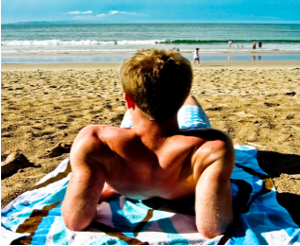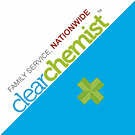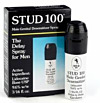Recent concerns about the labelling of sunscreen in the UK have prompted many of us to think twice about what we’re putting on our skin before we head out into the sun. But what does it all mean?
In this post we’ll explain the different types of harmful UV rays, how sunscreen works, and what you can do to prevent skin damage during the summer months.

What’s all the fuss about?
Many people do not realise that a suntan is actually a sign of skin damage, so you may be surprised to learn that the number of skin cancer cases linked to sun exposure is higher than the number of lung cancer cases caused by smoking.
Regardless of whether you’re going abroad or staying at home this summer, your skin will still be exposed to the sun. The best advice is always to stay covered up and avoid the midday sun, but as most people do not follow this advice, it is important to understand how sun tanning works, and how to limit the damage we are doing to our skin.
What is UV?
The sun’s rays are made up of three types of Ultraviolet Radiation Rays: UVA, UVB and UVC. The most common is UVA, which accounts for up to 95% of the UV on earth, and can penetrate deepest through the skin. UVA can also cause premature aging of the skin. UVB is more intense and is the main cause of sunburn. UVC is absorbed when entering our atmosphere and does not reach the Earth’s surface.
Our bodies react to UVB by producing vitamin D3, which is important to muscle and bone health. But UVB also causes the production of fresh melanin, which is the skin pigment that causes a change in skin colour, and creates a lasting tan.
UVA activates the existing melanin in the skin cells and produces an initial tan. Some researchers have suggested that because UVA penetrates deeper into the skin, it could cause skin cells to undergo ‘oxidative stress’, which can cause the skin to prematurely age.
What many people do not know is that the production and activation of this pigment is actually the body’s way of preventing further damage to the skin from UV radiation. The best ways to avoid health issues caused by UV (especially for children) is to stay out of the sun during the peak hours of the day (11am-3pm), when 60% of the sun’s UV rays arrive on Earth. Remember, if your shadow is short, you should seek shade and to drink plenty of water to stay hydrated.
Choosing a suitable sunscreen
Finding a suitable sunscreen is crucial for both adults and children. Research has indicated that if we all used effective sun protection up to the age of 18, it would lead to a 72% reduction in skin cancer in later life.
For your sunscreen to be effective it needs to protect you against both UVA and UVB rays. The ‘sun protection factor’ of a sunscreen tells you how effective it is against UVB rays. But when buying a sunscreen, many of us will neglect to check the UVA rating as well. The Royal Pharmaceutical Society is currently calling for a change to this rating system, to make it easier for people to choose appropriate protection.
Sunscreen works by filtering UVB rays - the higher the SPF the more rays it filters. Factor 15 filters approximately 93% UVB, factor 30 filters around 97%, and factor 50+ offers the highest protection of about 98%. The fairer your skin the higher SPF you will need to help reduce sun damage. It also needs to be applied regularly and in a generous amount.
The UVA rating is usually found on the back of the packaging in the form of a star rating. This rates the protection against UVA rays, out of five stars. You should aim to get a sunscreen with a UVA rating that is in line with it’s SPF (SPF 15 = 3*, SPF 30 = 4*, SPF 50 = 5*).
You should read the enclosed information booklet to determine the number of times the cream needs to be reapplied. As a rule, we suggest you do not wait longer than two hours before reapplication and ideally reapply every hour.
The World Health Organisation reported that SPF 15 is effective if used evenly and in large enough quantity. Although the National Institute for Health and Care Excellence (NICE) discovered that many people do not use factor 15 correctly. Because of this it is recommended that SPF 30 should be used as standard.
After sun
To ensure your tan last as long as possible you should always use after sun, which helps rehydrate the skin and prevent peeling. By retaining your tan for as long as possible, you can reduce the amount of time you spend in the sun.
As no sunscreen can offer 100% protection from the sun's rays, you need an effective moisturiser to treat the oxidative stress caused by UVA rays. An after sun containing anti-oxidants will help to fortify the skin and repair skin cells.
When it comes to sunburn, prevention is better than cure - and after sun is by no means a cure. The primary defence against sunburn is an effective sunscreen, but if you do get sunburn, an after sun can provide relief from mild symptoms, although it will not fix the damage to your skin. In cases of more severe sunburn you should contact a pharmacist or GP.
The danger of sun beds
A common and dangerous practice in modern society is to frequent tanning parlours before a holiday, or as a regular habit. This is incredibly damaging to your skin and dramatically increases the likelihood of developing skin cancer.
Sun beds are particularly dangerous for younger people, with the NHS reporting that the use of sunbeds before the age of 35 increases the risk of skin cancer by 75%. It is also very important to remember that prolonged exposure to UV rays will not make your tan darker, and there comes a point where the body no longer produces melanin.
Sun beds delivers UV rays differently from the sun, and while they provide about the same amount of UVB rays, they can deliver up to three times the amount of UVA, causing more long term damage, and greatly increases the risk of skin cancer.
Protect your eyes
Never underestimate the importance of protective sunglasses. Your eyes are very delicate and need protection from the sun. Sun burn of the eyes is more common than most believe. This is medically known as photokeratitis or ‘snow blindness’.
We often don’t realise, when we go hiking up a high mountain or skiing down one, that the UV radiation can be stronger at these altitudes. The World Health Organisation has reported that “fresh snow is a particularly good reflector and almost doubles a person's UV exposure”.
To check if your sunglasses are providing your eyes with enough protection, look for either ‘UV 400’ or ‘100% UV’ on the protection label. You can’t tan your eyes, so there is no excuse for not protecting them.
As you head out to soak up the rays, remember there is no such thing as a completely safe tan; UV rays are carcinogenic and the best way to protect yourself from sun damage is to cover up, and stay out of the midday sun. But by educating yourself you can reduce the impact of sun damage while getting some colour in your cheeks.
If you’ve got any more tips or advice please comment below and don’t forget to share and retweet so your friends and family understand the risks and how to limit the impact of tanning.













